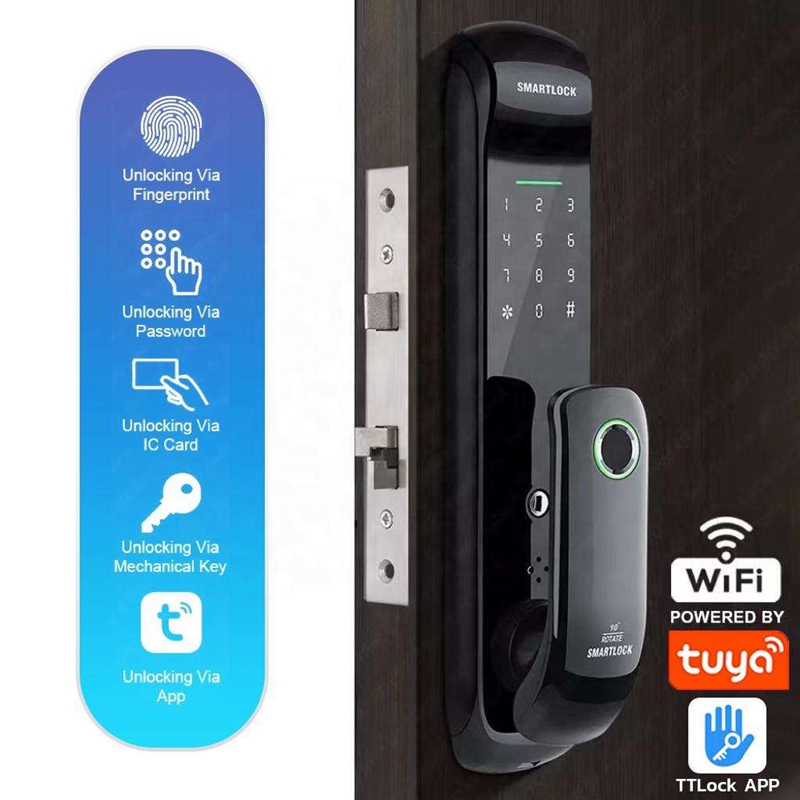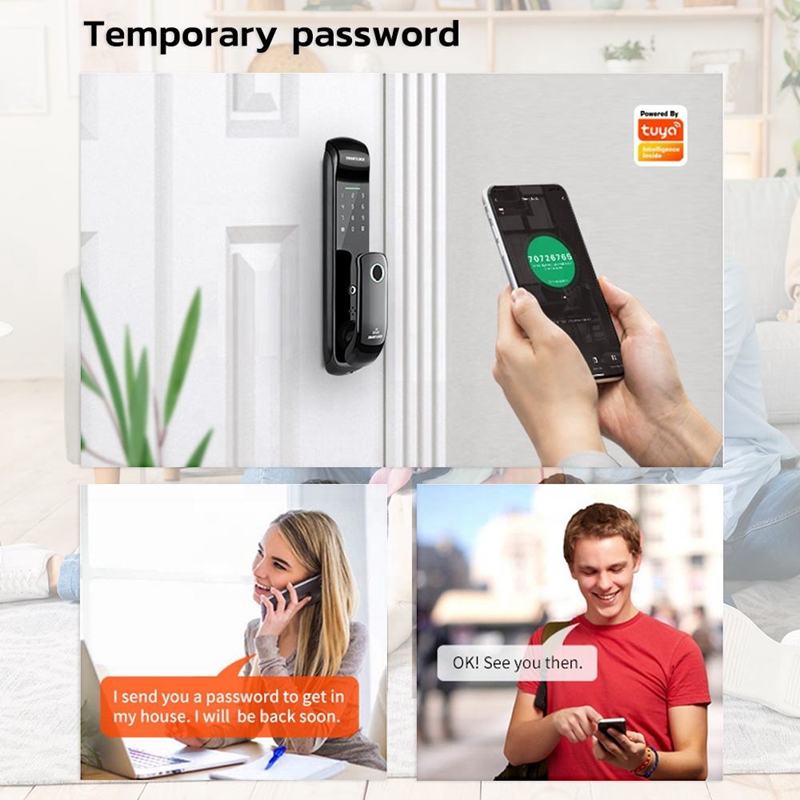Introduction:
Automatic smart locks are innovative door security systems that provide seamless access control. In this article, we will explore the definition of full-automatic smart locks, differentiate them from semi-automatic locks, and discuss important considerations for their usage. Furthermore, we will offer practical upkeep strategies to ensure its durability and dependable functionality.
1. What is fully automatic smart lock?
Full-automatic smart locks offer a seamless access experience by eliminating unnecessary manual actions. When a user verifies their identity through fingerprint recognition or password authentication, the lock mechanism automatically disengages without the need to press down on the handle. This allows the door to be effortlessly opened. Similarly, when closing the door, there is no requirement to lift the handle as the lock automatically engages, ensuring the door is securely locked. One notable advantage of full-automatic door locks is the peace of mind they provide, as there is no need to worry about forgetting to lock the door.
2. Differences Between Full-Automatic and Semi-Automatic Locks:
Full-Automatic Smart Locks:
Full-automatic smart locks operate on a simplified unlocking mechanism. Once the user verifies their identity through fingerprint, magnetic card, or password, the lock bolt automatically retracts. This allows the user to easily push the door open without the need for additional rotating actions. When closing the door, simply aligning the door properly causes the lock bolt to automatically extend, securing the door. The convenience of full-automatic fingerprint locks during everyday use is unquestionable.
Semi-Automatic Smart Locks:
Semi-automatic smart locks are currently prevalent in the smart lock market and require a two-step unlocking process: identity verification (fingerprint, magnetic card, or password) and rotating the handle. Although not as convenient as full-automatic smart locks, they offer significant improvements over traditional mechanical locks.
It is important to note that the automatic and semi-automatic designations refer to the unlocking mechanism of the smart locks. In terms of appearance, full-automatic smart locks often feature a push-pull style, while semi-automatic smart locks are more commonly designed with a handle.
3. Usage Precautions for Full-Automatic Smart Locks:
When operating full-automatic smart locks, it is essential to observe the following precautions:
❶ Avoid forcefully slamming the door, as this can impact the door frame, causing deformation and preventing the lock bolt from smoothly entering the frame for locking. Additionally, forceful impacts can cause the lock mechanism to shift, making it difficult to retract the lock bolt when opening the door.
❷ For rear-positioned disengagement full-automatic locks, it is recommended to disable the automatic relocking feature.
4. Maintenance Methods for Full-Automatic Smart Locks:
❶ Monitor the battery level of your smart lock and promptly replace it when low.
❷ In case of moisture or dirt on the fingerprint sensor, use a dry soft cloth to gently wipe it, taking care to avoid scratching the surface and compromising fingerprint recognition. Do not use substances containing alcohol, gasoline, diluents, or other flammable materials for cleaning or maintenance.
❸ If the mechanical key becomes difficult to use, apply a small amount of graphite or pencil lead powder to the keyway to ensure smooth operation.
❹ Avoid exposing the lock face to corrosive substances. Do not strike or impact the lock housing with hard objects, as this may damage the surface coating or indirectly affect the electronic components inside the fingerprint lock.
❺ Regularly inspect the smart lock. As a frequently used device, it is advisable to perform a maintenance check every six months or a year. Check for battery leakage, tighten loose screws, and ensure proper alignment between the lock body and strike plate.
❻ Smart locks typically contain intricate electronic components that may be damaged if disassembled by untrained individuals. If you suspect any issues with your fingerprint lock, it is best to seek assistance from a professional.
❼ Full-automatic locks use lithium batteries. Avoid using fast chargers to maximize the battery capacity quickly (high voltage may cause the graphite rod to display full charge without actually charging it). Instead, use a slow charger (5V/2A) to maintain optimal charging levels. Otherwise, the lithium battery may not reach full capacity, resulting in reduced overall door unlocking cycles.
❽ If your full-automatic lock uses a lithium battery, do not directly charge it with a power bank, as it may lead to battery aging or, in severe cases, even explosions.
Post time: May-30-2023






